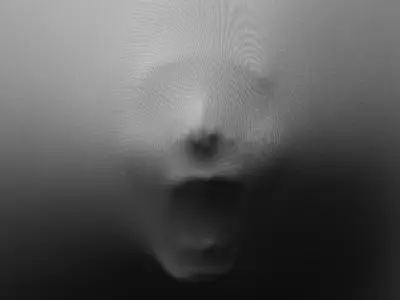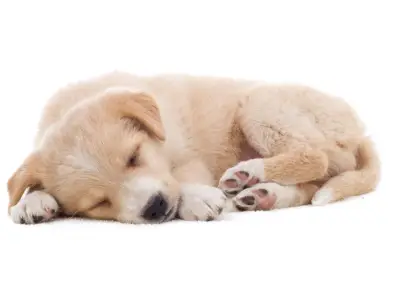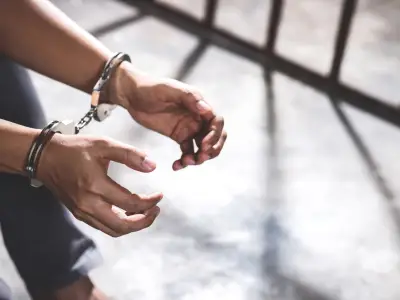They say a picture is worth a thousand words. Unfortunately, with so many options on the market, and a few camera myths floating around, a photography starter kit can also end up costing you thousands in unnecessary expenditure... without the right guidance.
Our ultimate photography starter kit guide will take you through everything you’ll need, from DSLRs, lenses, accessories and editing software.
We’ll start with the most essential piece of your new photography starter kit: the equipment by which all photographs come into being. Your camera.
The Camera
Photographers can often be heard saying, ‘The best camera is the one you have in your hand’. Indeed, there is no substitute for skill. However, a great camera that suits your style of shooting is the first step in constructing your photography starter kit.

So, where to start? First things first; romantic notions about film and the convenience of a point and shoot aside, we recommend you invest in a DSLR (digital single-lens reflex) camera. With better photo quality, speed, focus, lens and versatility of settings, as well as the added control of through-the-lens viewing, a DSLR is your ticket to taking a great photograph. Entry-level model DSLRs do have fewer features than high-end models, but they’re also easier to use, which is important to consider when you’re starting out.
Secondly, let’s put an end to two of the most pervasive camera myths. Manufacturers will try to tell you it is worth spending extra money on megapixels and sensor size. This isn’t necessarily true - especially if you’re a beginner looking to invest in a photography starter kit.
Why? Any camera with over 6 megapixels will print at almost any size so, unless your photographs are being blown up to billboard size, additional megapixels will likely make little difference to your work. Even then, remember very large images aren’t designed to be viewed in close-up detail, so pixelation is probably not as important an issue as manufacturers' adverts will suggest. When it comes to sensor size, you might want to consider a cheaper camera with a crop sensor over a full frame. While a full frame will generate better quality images, the cameras tend to be bulkier and only work at their best with expensive lenses.
Thirdly, you needn’t pay big bucks for a big brand name. The most important thing to remember when selecting your camera is that it serves as a tool, not a status symbol.
The Lens
This is undoubtedly the second most important piece of your photography starter kit. Your camera likely came with an 18-55mm lens, which is a very useful starting point for your 35mm DSLR. The 18-55mm is a zoom lens, which provides the option to - as the name suggests - zoom in and out.

It’s a reasonable zoom capacity, but this starter kit lens will only take you so far - especially if you intend to branch out into specific photographic practices, such as interior, landscape, or wildlife photography. For these, consider specialist lenses.
All lenses fall into one of two categories: Zoom lenses, as above, or prime lenses, which offer a greater quality but come with a fixed focal length, meaning you can’t zoom in or out on your subject matter.
The Specialist Lens
A specialist lens may well not be a necessary part of your photography starter kit, but if you are keen to hit the ground running taking a variety of different shots at a high standard, it’s worth considering the investment.

Beyond your kit lens, there are 10 other types of lenses you might want to consider adding to your arsenal:
- Fisheye lenses or ultra-wide angle lenses (8-24mm) are ideal for shooting panoramic shots, cityscapes, landscapes, real estate and abstracts, but create distortion
- Wide-angle lenses (24-35mm) offer broad perspectives but less extreme or distorted depictions – perfect for landscapes, interiors, and architectural shots
- Standard prime lenses (35mm, 50mm, 85mm, or 135mm) are usually selected for their high-quality fixed focal point capacity across many areas of photography
- Normal lenses or ‘Nifty Fifties’ (50mm) are ideal for creating lifelike perspectives by mimicking what the eye sees in portraits, landscapes, and street photography
- Zoom lenses (55-200mm) are great for wildlife photography, for their capacity to allow photographers to remain far away from the subject
- Macro lenses (50-200mm) offer the ability to take ultra-detailed photographs, usually at weddings or out in the wild shooting flora and fauna
- Telephoto lenses (100-600mm) are great for budding wildlife photographers as their long lenses allow you to magnify and frame the subject from afar
- Super-telephoto lenses (400-2000mm) are expensive and bulky so are generally reserved for professionals shooting events, wildlife, or astronomy
- Tilt-shift lenses (17-35mm) are prime lenses great for architecture and fine art as they allow you to modify the focal plane, to correct distortions
- Infrared lenses (35-80mm) shoot in black and white and play with light rather than perspective for a more creative take on photography
The Tripod
Now you’ve got your camera and lens, it’s time to set up your shot. If you want to take a sharp and focussed picture each time you press the shutter, a tripod is a vital piece of equipment to include in your photography starter kit.

This is especially important if you’re planning to photograph in low light or difficult conditions using manual aperture settings.
You could also consider a monopod which — as the name suggests — is like a tripod, but with one leg. These are particularly handy if your photography takes you to a fast-paced environment with little time to set up the shot; for instance, a wedding, party, concert, or sports event. However, these lack the stability of a tripod, so are less adept at minimising camera shake.
The Accessories
Nowadays, you can purchase a wide range of add-ons for your photography starter kit, to make your life that little bit easier.
If you’re planning on elevating your practice to the point where you’ll be out shooting hundreds of pictures over long days, a battery pack and external hard drive, as well as a decent memory card, are essential. If your photography often takes you outside, a lens cleaning kit is a good idea, too.
An external flash can really help bring portraits to life in an instant before you even consider the time spent on the editing process. Likewise, if you’re considering any studio photography, a set of studio lights will stand you in good stead.

Now, for the gadgets. A remote shutter release is great for self-portrait photography or to simply eradicate any excess camera shake from triggering the shutter on the camera.
With an increasing number of photographers also specialising in video content, you may want to consider extending your practice into drone footage. Alternatively, you can achieve great, seamless video footage using a gimbal or a GoPro.
The Camera and Lens Bag
So, you’re racking up quite the photography starter kit, here. You’ll need somewhere to safely store it all when you’re out shooting. Your camera bag should be purpose-built with padded compartments. Some include velcro inserts for flexibility and versatility. There are many options on the market at different price points, so practically and aesthetically, you should be able to find one to suit your specific needs.

Rucksacks generally offer a more practical solution if you intend to shoot in comfort with maximum back and shoulder support on the move. Many photographers, however, prefer a traditionally-styled shoulder or messenger bag, which tend to leave the kit more accessible and are easier to pick up and put down for the shot. You could also consider a roller bag or trolley case. However, these are only suited to urban environments and easy-to-navigate projects.
While canvas fabrics might seem a stylish solution, investing in waterproof fabric with sealed zippers, instead of clasps, is probably more important when it comes to protecting your kit — especially if you plan to shoot in the great outdoors.
Ultimately, safety and security are the keywords when making your decision. Some camera bags come with the ability to padlock zips shut. When you’re investing in a bag to protect potentially expensive equipment, you might want to take this into consideration.
For obvious reasons, we recommend you purchase your bag after you’ve got all your equipment to make sure it all fits! It’s also a good idea to leave room in your camera bag for plenty of water, snacks, a notepad and pen to jot down your camera settings when you nail the shot, maybe even your laptop for on-the-go edits, as well as a torch and first aid kit — accidents do happen when you’re concentrating intently on the subject!
The Editing Tools
Most photographers swear by the industry standards of the Adobe editing suite, Lightroom and PhotoShop, for their capacity to make your simple shots show-stopping. The techniques and tools on offer from editing software do take some time to get used to and come with a price tag.

Handily, however, versions of the software are available as apps for your smartphone or tablet, so you can edit on location. While they are well-respected, reliable products, these aren’t necessarily must-haves for a beginner on the hunt for their photography starter kit.
If you’re just getting started, you can avoid a hefty investment by opting for cheaper editing tools available online, such as Canva.
The Online Resources
Chances are, your photographs will exist in the digital realm — and so should you, at least some of the time. One of the greatest resources out there is the knowledge and support of other photographers. There are plenty of forums and spaces online where photographers share tips, free editing presets, their favourite locations and lighting setups, and advice for getting started.
Browse social media for inspiration. Utilise it to find meetups in your area with like-minded creatives seeking group trips. If you’re thinking about going pro, create profiles on freelance sites and bolster your online portfolio with a sleek website and specially curated social channels.

Ultimately, however, your photography starter kit begins and ends with a good eye, an understanding of composition, a flair for creativity and the all-important patience to capture that perfect picture.
At the time of publishing, entering the code LEARNING in the checkout will reduce the price of our
Digital Photography Diploma Course to £29.




